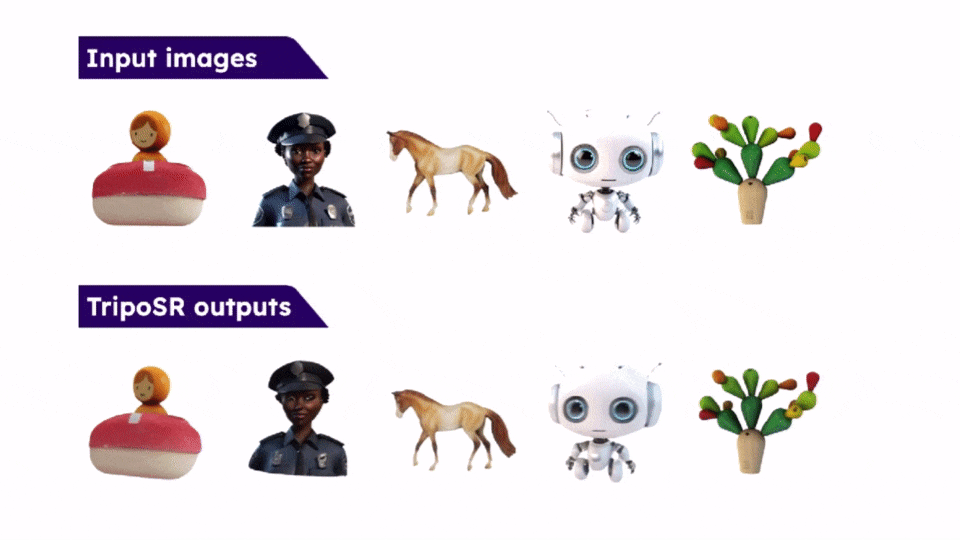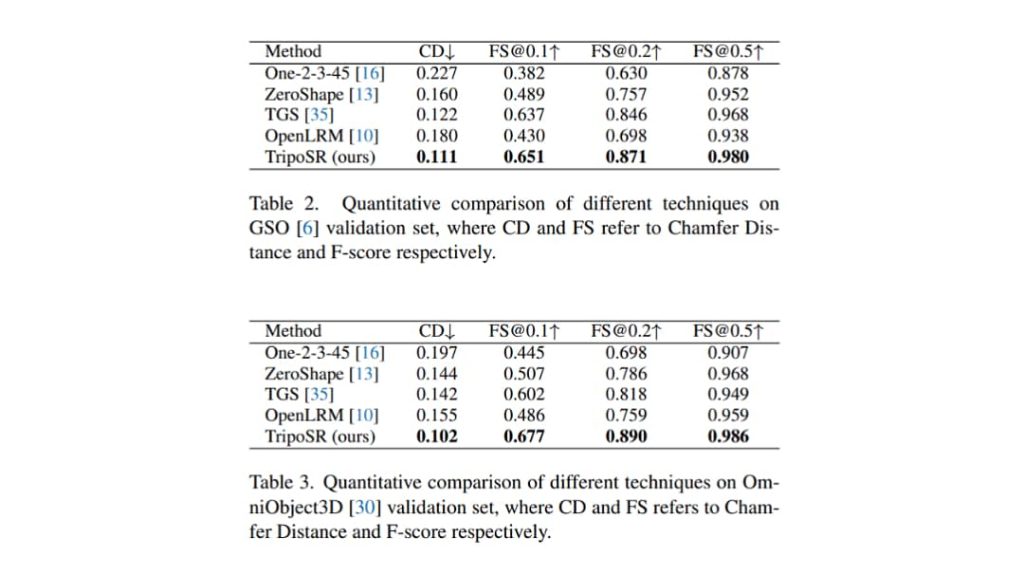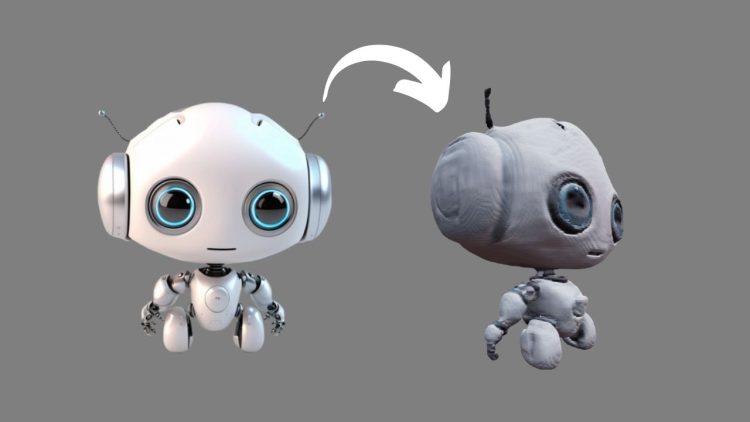Stability AI announced an amazing 3D object-generating AI model, called TripoSR. But how does this latest model operate and what are its features? Let’s dive deeper into TripoSR in this article!
Highlights:
- Stability AI in collaboration with Tripo AI announces TripoSR, to generate 3D objects from images.
- Comes with several enhancements and gives big competition to OpenLRM.
- Accessible to users with or without GPUs to create 3D objects in less than a second.
From Images to 3D Objects: TripoSR’s Technology
TripoSR is an image-to-3D model, made by Stability AI in partnership with TripoAI. Its transformer architecture can quickly generate high-quality 3D objects from a single image in less than 0.5 seconds.
If you don’t know, Tripo AI is a 3D modeling tool that can create ready-to-use 3D models using AI. Stability AI partnered with them and tested this new model on an NVIDIA A100, where they deduced the stunning fast response of less than a second. The model has outperformed OpenLRM in various terms of speed and processing time.
Here are some input images and corresponding 3D objects generated by TripoSR, shared by Stability AI:

TripoSR’s source code is now available on Tripo’s Github repository, with pre-trained models. The MIT license is good for commercialized, personal, and research use.
“We invite developers, designers, and creators to explore its capabilities, contribute to its evolution, and discover its potential to transform their work and industries. “
Stability AI
The world of AI keeps evolving with all these cutting-edge technologies starting from Sora AI’s image to video feature, and Adobe’s PDF summarization AI assistant, and now you can generate 3D objects from your images thanks to Stability AI and Tripo AI.
The Model Architecture
Based on the LRM, TripoSR’s architecture incorporates several technological advances in data curation, model building, and training methodology. It outputs a three-dimensional representation of the object in the image after receiving a single RGB image as input.
There are 3 working components in the model’s architecture:
- The Image Encoder: A vision transformer model that has already been trained, DINOv1, is used to initialize the image encoder. It converts an RGB image into a set of latent vectors. These vectors include the data required to reconstruct the three-dimensional object and encode both the image’s global and local attributes.
- Image-to-Triplane Decoder: After that, the latent vectors are transformed into the triplane-NeRF representation via the image-to-triplane decoder, a compact and expressive 3D representation that works well for depicting objects with intricate shapes and textures. The decoder is further composed of several stacked transformer layers:
- Self-Attention Layer: The decoder can focus on various aspects of the triplane representation and discover connections between them with the help of this layer.
- Cross-Attention Layer: The decoder may attend to the latent vectors from the image encoder and include both local and global picture information into the triplane representation thanks to this layer.
- Triplane-based neural radiance field (NeRF): The multilayer perceptrons (MLPs) that make up the NeRF model are in charge of predicting the color and density of a three-dimensional point in space.
Overall, the architecture is determined by the primary parameters such as the transformer’s number of layers, the triplanes’ dimensions, the NeRF model’s details, and the primary training settings,
5 Major improvements in TripoSR’s technology
Stability and Tripo worked together on bringing several improvements to TripoSR’s technology. Most of these improvements were over the baseline LRM model, such as mask supervision, channel number optimization, and a more effective crop rendering technique.
TripoSR was qualitatively and quantitatively compared to previous state-of-the-art models with the help of two evaluation datasets and 3D shape metrics.:

TripoSR also significantly outperforms several models including OpenLRM on various grounds of evaluation such as Chamfer Distance and F-Score.
These improvements in score can be attributed to the following enhancements:
- Data Curation: The quality of training data was improved by carefully choosing a portion of the Objaverse dataset. This improved the dataset features which helped in improving the training process.
- Data Rendering: To improve the model’s capacity to generalize even when trained just with the Objaverse dataset, a variety of data rendering approaches were implemented that more closely mimic the distribution of real-world photos.
- Optimization of Triplane Channel: Because volume rendering has a high computational cost, the channel design within the triplane-NeRF representation is crucial for controlling the GPU memory footprint during both training and inference. Furthermore, the number of channels greatly affects the model’s ability to rebuild in great detail and with high fidelity. This is vital for TripoSR’s model flexibility.
- Loss of Mask: During training, Stability included a mask loss function that greatly lowers “floater” artifacts and raises the reconstruction fidelity. This function was crucial for minimizing the training loss.
- Local Rendering Supervision: Since the model entirely depends on rendering losses for supervision, high-resolution rendering is required for the model to learn intricate reconstructions of texture and shape. The main goal behind this is to minimize GPU memory loads and place greater emphasis on areas of interest.
Overall, for a broad range of users and applications, TripoSR is accessible and feasible because of its minimal inference budget requirements, even in the absence of a GPU. This is perhaps one of the biggest benefits that Tripo and Stability are offering together to the developer community worldwide.
Conclusion
Stability AI gained some more heat in the Generative AI space again with TripoSR, just a week after its wildcard Stable Diffusion 3. What can be next? With each passing day, the AI market gets more competitive as we get blessed with the latest technical enhancements.








